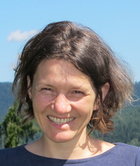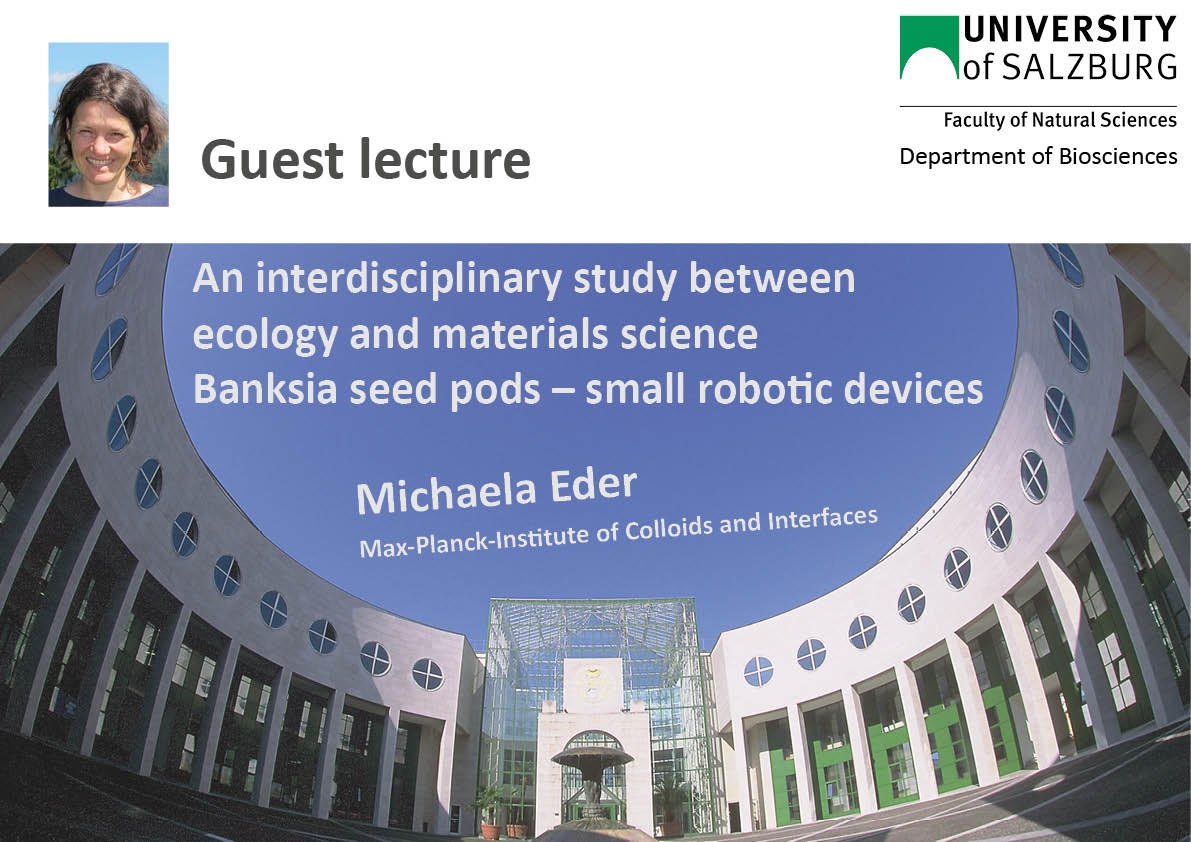08.11. – Guest lecture: An interdisciplinary study between ecology and materials science BANKSIA SEED PODS – SMALL ROBOTIC DEVICES

Dr. Michaela Eder is Group leader Biomaterials, Plant Material Adaption at the Max Planck Institute of Colloids and Interfaces in Potsdam
Abstract: In a collaboration between ecologists and material scientists we started to explore seed storage and release of mature Banksia follicles. Some Banksias are known to store their seeds for years in dead follicles on the plant before they open upon the heat of a bush fire and release them after rain. Since it was reported in the literature that levels of serotiny can change along a climatic gradient, we collected follicles of Banksia attenuata along the coastline of Western Australia from Perth to Geraldton to explore potential differences in follicle properties. Interestingly we found, that the temperatures for initial opening gradually increased from the south to the north.
The follicle mechanisms, long-term seed storage and triggered, temperature-controlled release, are particularly interesting from a materials science point of view, since all the properties and “information” to perform the necessary functions and tasks is incorporated in the material. The material itself consists just of a few basic building blocks but they are sufficient ingredients to build the (multi)functional complex structures. This is achieved by structuring rather than changing chemical components. For a comprehensive understanding we used a wide range of techniques to study structure and mechanical properties at a range of different length scales. We were able to identify the “temperature sensor” of the seed pods: the inner curvature of the layered follicles gradually increases providing Northern seed pods with a higher flexural rigidity. Initial opening is activated by a temperature-dependent decrease of the elastic modulus of the endocarp, allowing pre-stresses to be released. However, the initial opening is not sufficient to release the seeds, further opening is fueled by moisture changes which lead to directional swelling and at the same time to changing mechanical properties in different layers of the seed pod.
The findings on Banksia seed pods provide inspiration for self-sensing, moving and actuating materials and systems. Furthermore, they contribute to a deeper understanding of seed release mechanisms in the natural habitat. In the light of a changing climate knowledge coming from materials science might be helpful for more accurate predictions related to plant conservation, land management and composition of ecosystem communities. 





